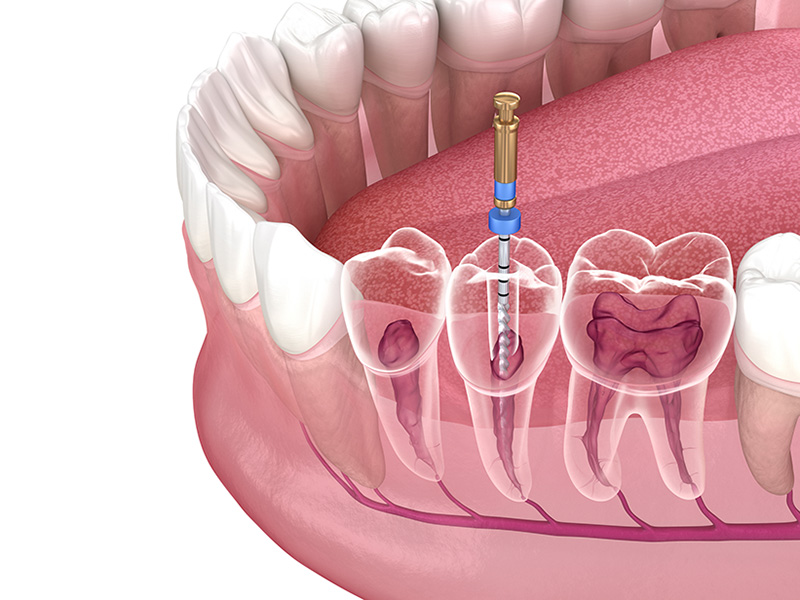Root Canal Treatment
Root canal treatment, also known as endodontic therapy, is a dental procedure used to treat a tooth that has a damaged or infected pulp (the innermost part of the tooth). The pulp contains nerves, blood vessels, and connective tissue, and when it becomes infected or inflamed, it can cause severe pain and other dental issues.

Root Canal Treatment Process:
- Diagnosis: The dentist will examine the tooth, using X-rays photos to assess the extent of the damage or infection.
- Local Anesthesia: Before starting the procedure, the dentist will administer local anesthesia to numb the affected tooth and the surrounding area.
- Isolation: A rubber dam is often placed around the tooth to keep it dry and free from saliva during the procedure.
- Access Opening: The dentist will create an opening in the crown of the tooth to access the pulp chamber and root canals.
- Cleaning and Shaping: The dentist will remove the infected or damaged pulp tissue, clean the inside of the tooth, and shape the root canals using specialized instruments. This step helps eliminate bacteria and prevents future infection.
- Irrigation: The root canals are irrigated with antimicrobial solutions to further clean and disinfect the area. Oral irrigation is a dental procedure that is effective at flushing out plaque, bacteria and other toxins that become trapped in the small spaces between teeth and under the gumline, preventing the buildup of harmful bacteria. The treatment is also used to deliver antimicrobials under the gumline.
- Filling: Once the canals are cleaned and shaped, they are filled with a biocompatible material called gutta-percha to seal the space and prevent further infection.
- Restoration: After the root canal, the tooth may be weakened, so a crown or other restoration is often placed on top of the tooth to restore its strength and functionality.
Benefits of Root Canal Treatment:
- Pain Relief: The procedure alleviates the pain caused by the infected or inflamed pulp.
- Saves the Tooth: Rather than extracting the tooth, root canal treatment allows the preservation of the natural tooth.
- Prevents Spread of Infection: By removing the infected pulp, the procedure prevents the spread of infection to surrounding tissues.
While root canal treatment has a reputation for being associated with pain, advancements in dental technology and anesthesia have made the procedure relatively comfortable for patients. It is essential to follow the dentist’s post-treatment care instructions and attend any recommended follow-up appointments for the best outcomes.
